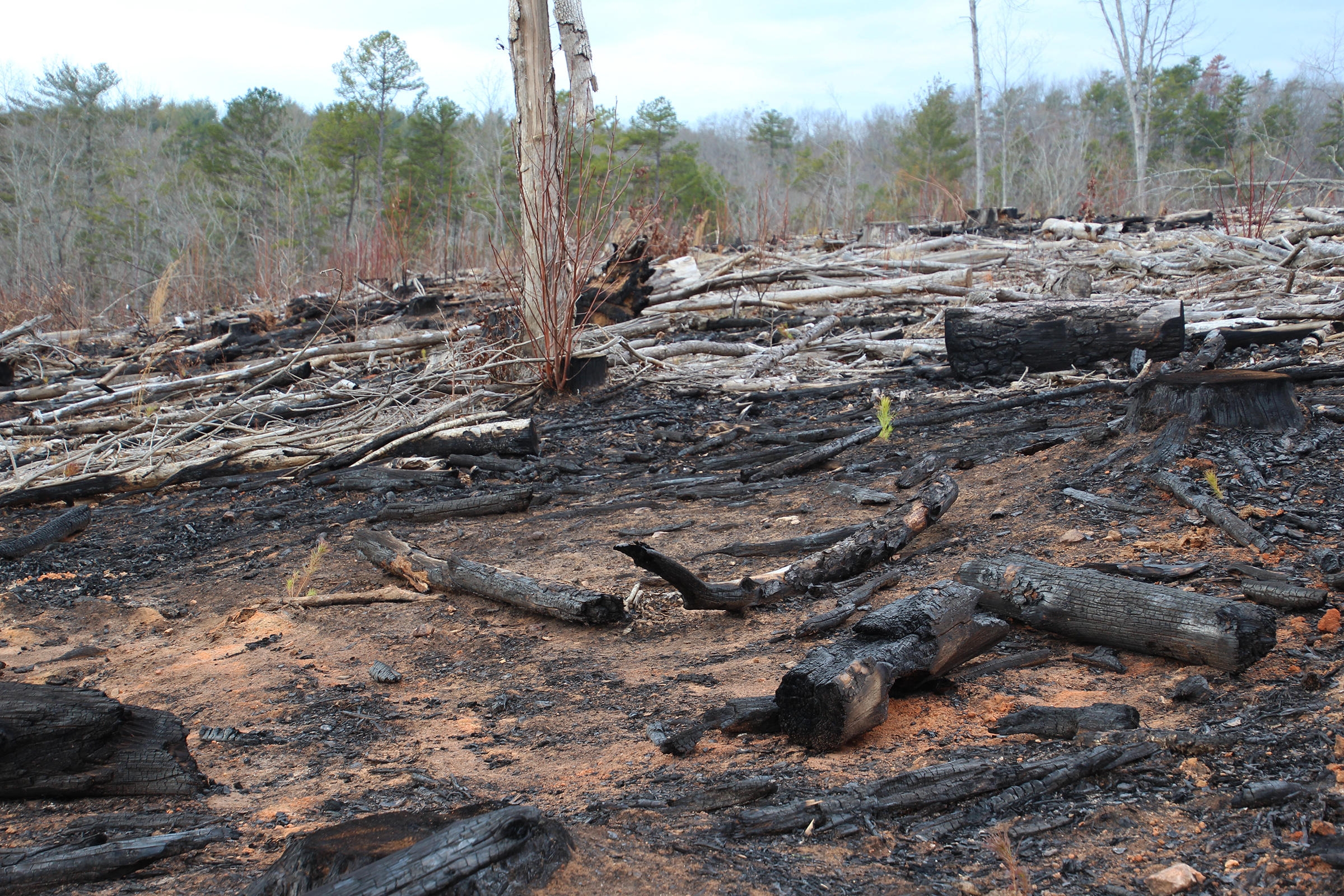AP Ranger District
Prescribed Burn
South Carolina
Recently, the Forest Service issued a proposal to implement prescribed burning on 8,662 acres of Sumter National Forest lands. The proposal consists of 16 burn units across the landscape, with the purported purpose of restoring upland oak-hickory and mixed pine-oak-hickory forests in order to maintain a mix of forest serial habitats, and the creation and maintenance of woodland habitat. Two-thirds (5,828 acres) of the total area proposed for prescribed burning is in the Chattooga River watershed.
The proposal for prescribed burning in 2022, on the face of it, seems to be in line with our mission to promote the restoration of “natural ecological integrity.” However, we have many concerns that, in actuality, this proposal will do harm to the ongoing recovery of a healthy native ecosystem in the Chattooga watershed.
The fire-adapted component of our forest in the Chattooga watershed is confined to the pine-hardwood forests of dry south and southwest facing ridges, with most of the other forest areas dominated by mixed hardwoods, in an overall landscape heavily influenced by high rainfall and more mesic conditions, with a fire regime of low and medium intensity natural fires, on a much longer fire return interval. Therefore, frequent prescribed burning is an unnatural fire regime that does not favor native forest restoration in the Andrew Pickens Ranger District. The latest science confirms that managing our public lands by restoring a healthy native forest, that is allowed to attain old-growth characteristics, is more efficient in carbon sequestration than creating stands of younger age class crop trees through clear-cutting and heavily prescribed burning.
View the proposed burn sites on our Interactive Map.

Comments Due: THURSDAY, Oct. 21
Comments must:
- Identify project on which comments are being submitted (“FY 2022 AP Prescribed Burning”)
- Include Specific Issues about the Project
- Name, Address, Email/Phone of Commenter
Email comments to: SM.FS.r8fmsapcom@usda.gov
TAlking points
- Biased Research: We believe the Forest Service’s position that the forests of the APD are mostly fire-adapted, with a frequent fire cycle, is based on biased, in-house research. This research seeks to support the paradigm of fire-driven ecosystems, because those ecosystems produce a higher percentage of merchantable tree species, allowing them to meet politically motivated timber targets.
- Destruction of wildlife habitat: Prescribed burning that may extend through April could cause direct mortality to ground-nesting birds, including wild turkey, which begin nesting around April 1st. It will also impact fire-sensitive amphibians and reptiles such as the imperiled green salamander, which is known to exist in the proposed burning area, and which is a candidate Threatened & Endangered species for listing by the US Fish & Wildlife Service.
- Soil & waterway degradation: Prescribed fire on steep slopes will result in severe soil erosion and subsequent sediments entering streams, thus harming aquatic species. There is ample evidence from previous projects that certain prescribed burning areas in the APD have left areas denuded down to the bare mineral soils.
- Air Quality Concerns: Large and frequently prescribed burning, as is suggested for the APD, may result in significant negative human health impacts. Recent medical studies have concluded that frequently prescribed burns can have a comparable impact on human health as the widely known adverse effects of severe & uncontrolled brush fires.
- Repeat Proliferation of Invasive Plants: Prescribed fire aids the spread of non-native invasive species such as Elaeagnus sp. including autumn olive, Russian olive and silverthorn. The proposal for prescribed burning on the Garland North, Back 90 and Turkey Ridge Tracts includes areas that have experienced an explosion of Elaeagnus, which is clearly linked to when the APD began aggressive clearcutting of these areas as prescribed in the Loblolly Project, coupled with frequent prescribed burns.
- Exacerbating Climate Change: Prescribed fire emits a large amount of carbon into the atmosphere, contributing to and stoking the dire impacts of global warming and climate change.
- Protection of Archaeological Sites: Even though the scoping letter mentions protection for archaeological sites, no specific protection plan was disclosed. There is at least one known site in a burn block.
- Data Monitoring: Chattooga Conservancy staff has participated in several Fire Learning Network meetings in which FS Land managers have openly admitted scant to no resources for conducting a robust monitoring program to fully document the effects of current large scale prescribed burning programs.
Read our full comments here: AP Prescribed Burn Scoping Notice – October 2021 – Chattooga Conservancy Comments

